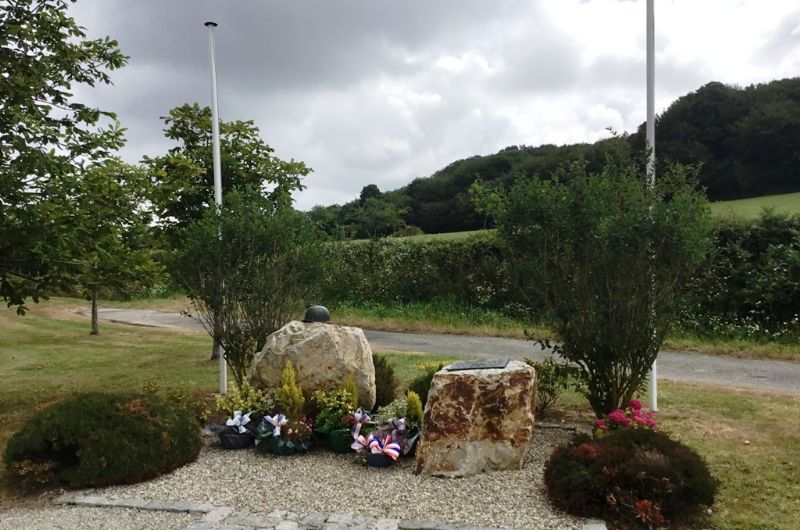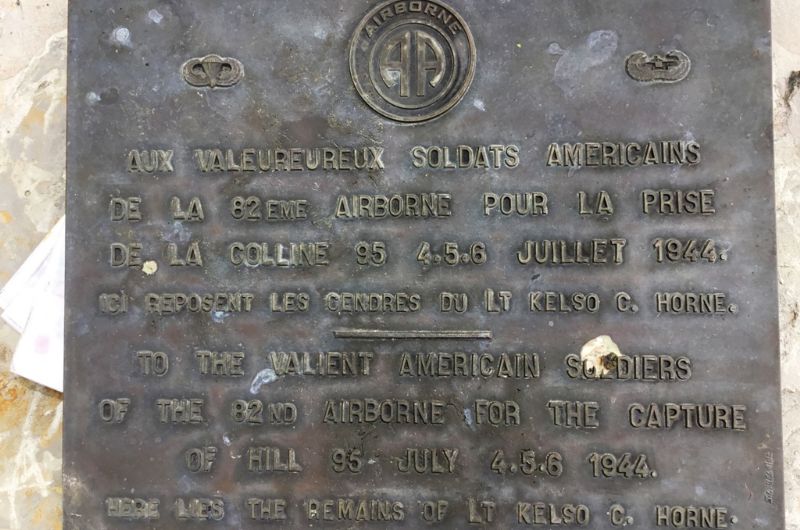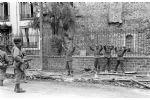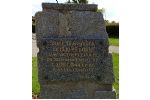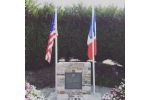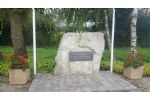Kelso Crowder Horne
Mémorial en hommage aux soldats de la 82nd Airborne Division pour la prise de la colline 95 les 4,5 et 6 juillet 1944.
Ici reposent les cendres du Lt Kelso C. Horne.
Kelso Crowder Horne né à Dublin (Georgie, États-Unis) le 12 novembre 1912 et mort à dans la même ville le 25 novembre 2000, est un militaire américain lié au département de la Manche.
ll s'engage en juin 1942 avec le souhait de devenir parachutiste.
En février 1943, il passe Second Lieutenant et s'inscrit à l'école de parachutisme. Il y obtient ses ailes et en mars 1943, iI est affecté au 1er peloton de la compagnie India du 3e bataillon du 508e régiment d'infanterie parachutiste. Le 6 juin 1944, à 2 heures 06, Kelso saute d'un C 47, et atterrit sur son objectif, entre le Merderet et la voie de chemin de fer Paris-Cherbourg.
Il rejoint le PC de la division à l'ouest de Sainte-Mère-Église. Avec une vingtaine d'hommes il est envoyé pour s'emparer d'une ferme en bordure du Merderet. Il rejoint ensuite Chef-du-Pont et par le pont de la La Fière.
Un nombre impressionnant de cadavres allemands jonchaient le long de la chaussée. En direction de Cauquigny, un allemand allongé parmi les morts l'interpelle : « Kamerad, kamerad ! ».
Kelso Horne le confie à un soldat avec ordre de le ramener vers l'arrière au camp des prisonniers. A peine a t'il tourné le dos qu'il entend une rafale de Thompson. Le GI vient de descendre l'allemand. Quelques jours plus tard, il avance le long d'une route avec son peloton lorsqu'il est interpelé par le général Lawton Collins, commandant du 7e corps d’armée US qui lui demande où se trouve son commandant, le lieutenant colonel Louis G. Mendez. Un photographe de Life Magazine, Bob Landry, accompagne le général, il descend de voiture et demande à Kelso C. Horne l'autorisation de le prendre en photo. Il lui dit : « Eh bien, vas-y, et prends-là alors. » Il regarde l'appareil photo, quand le photographe lui demande de détourner le regard, à ce moment il prend la photographie.
Après lui avoir demandé son nom et la ville d'où il venait, ils sont repartis. Sa photo va devenir une véritable icône symbolisant le GI américain, après sa parution dans le numéro de Life Magazine daté du 4 août 1944. Doris, son épouse, est appelée par un agent de la poste, à 6 heures du matin, le jour de la parution du magazine Life. Quand elle a vu la couverture, elle a dit : « Je pensais qu'il était le plus beau de toute l'armée. » Elle était également heureuse de voir sa bague de mariage sur la photo. En effet, une blague classique parmi les épouses de GI's affirmait que les hommes enlevaient leurs alliances lors de leur voyage en Europe et les remettaient au retour.
Colline Sainte-Catherine (Hill 95)
Le 4 juillet, le 508th PIR approche de la colline Sainte-Catherine (Hill 95) près de La Haye-du-Puits. Avec son sergent et ami Raymond Conrad de Ia compagnie India, ils sont pris pour cibles, une balle traverse Conrad de part en part. Quelques instants plus tard, en rejoignant son poste, un jeune GI qui l'accompagne a les jambes fauchées par une rafale de MG 42. Il s'en tire encore indemne. Le même jour, à 11 heures du matin, la compagnie 3/508 se lance à l'assaut à découvert de la colline 95.
Kelso C. Horne a soudain l'impression que quelqu'un vient de lui asséner un grand coup de batte de base ball dans la poitrine : « Je ne l'ai pas entendu venir mais j'ai su que c'était un éclat d'obus. » Il se relève, et remarque qu'il a perdu son Colt sous l'impact. Il rampe à l'abri d'une haie, il est en sang. Il est conduit vers l'arrière dans un hôpital de campagne, puis il est transféré à l’hôpital de Cheltenham (Angleterre). Il est toujours sur son lit d’hôpital quand un GI blessé près de lui le regarde et lui dit : « Tu viens d'avoir un garçon ! ». Kelso Horne est surpris ! C'est son beau-père, connaissant les lenteurs du courrier, qui a eu l'idée de passer une annonce de la naissance de son petit-fils dans le Stars and Stripes. Celle-ci passe dans le numéro de juillet : Kelso C. Casey, Horne, Jr. had been born on July 18th. Kelso Horne reste à l’hôpital jusqu'en septembre 1944. Il ne participe pas à l'invasion de la Hollande (opération Market Garden).
Il participe ensuite à la campagne des Ardennes avec la 82e division aéroportée, engagée dans le secteur de Stavelot, puis aux combats de La Gleize et Stourmont. En janvier 1945, après avoir combattu dans la Rhur, la 82e division aéroportée est ramenée en France pour être reconstituée en février. Elle fera la jonction avec les troupes russes sur l'Elbe en avril, puis au début du mois suivant la division américaine libère le camp de Neuengamme et la plupart de ses kommandos. Après la capitulation de l'Allemagne, elle est envoyée à Berlin.
Source Wikimanche
Crédit photo Momo50

